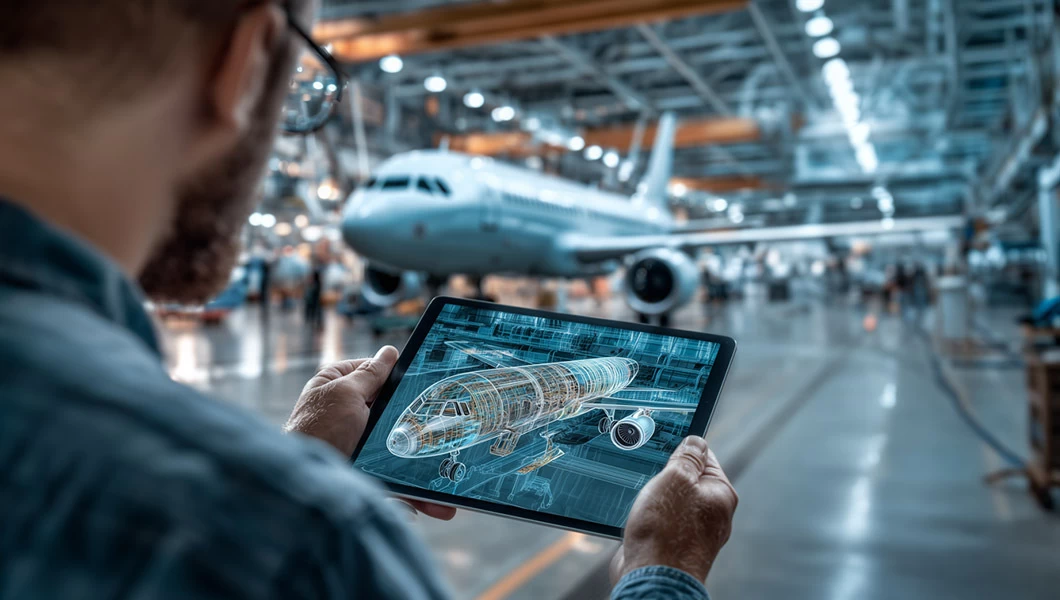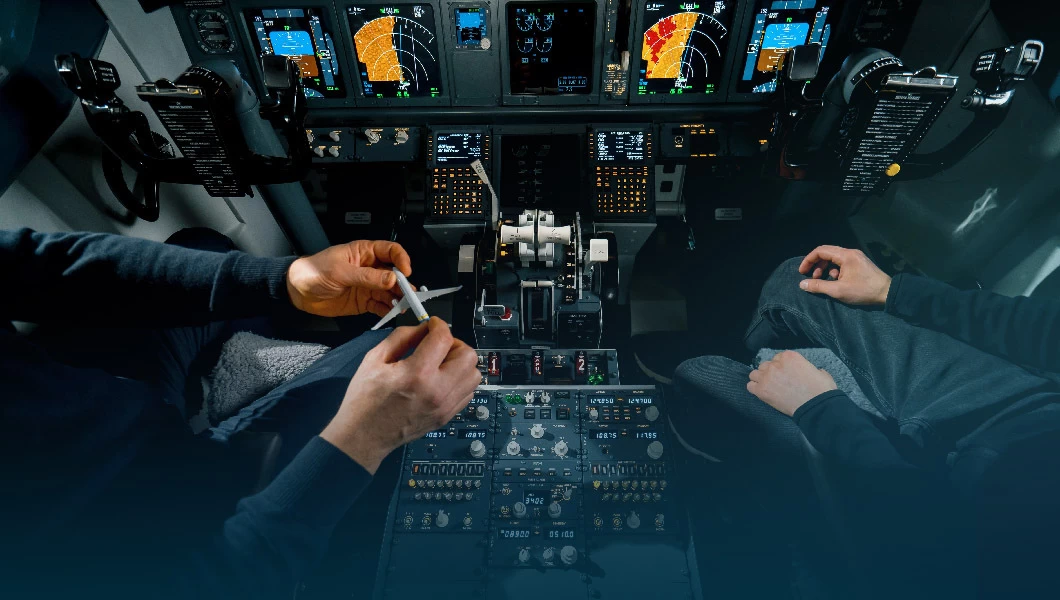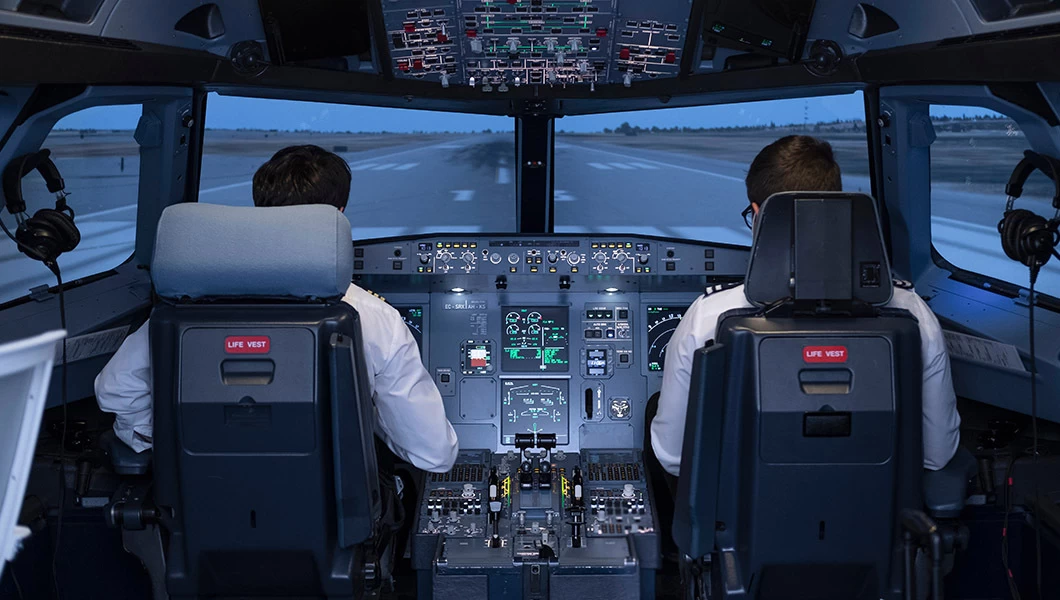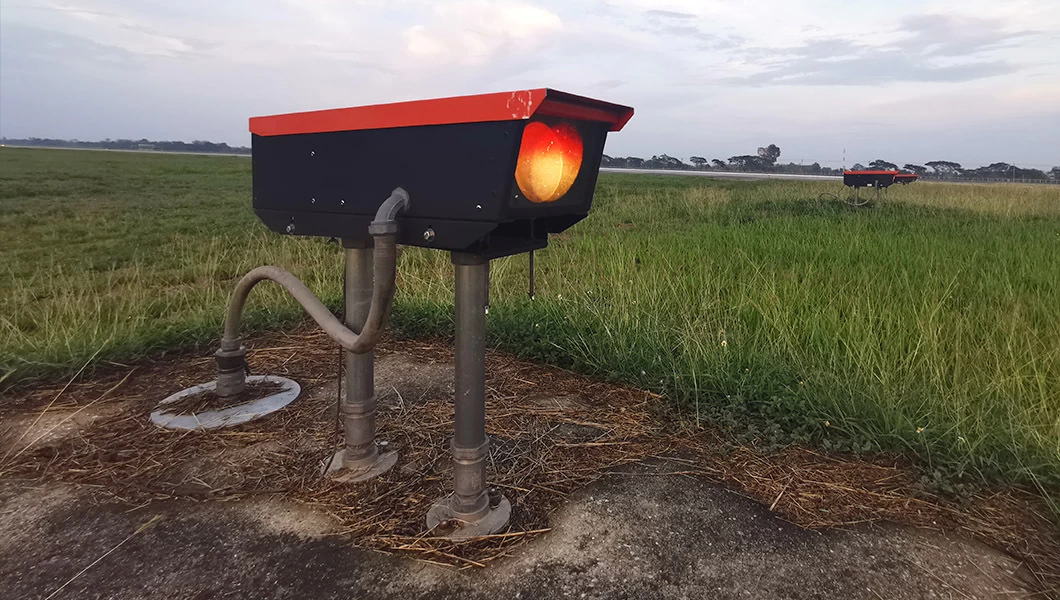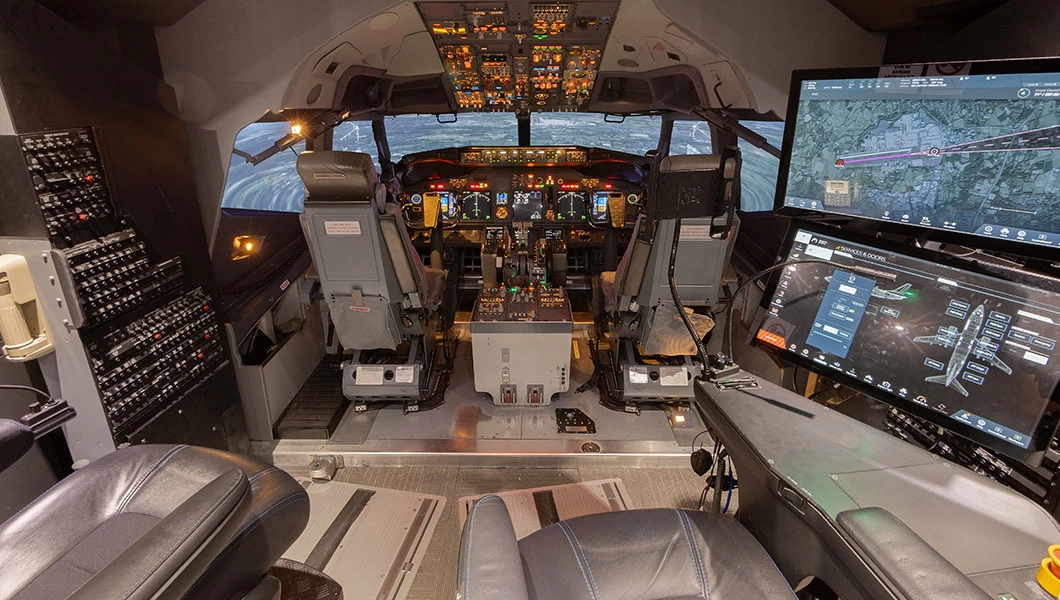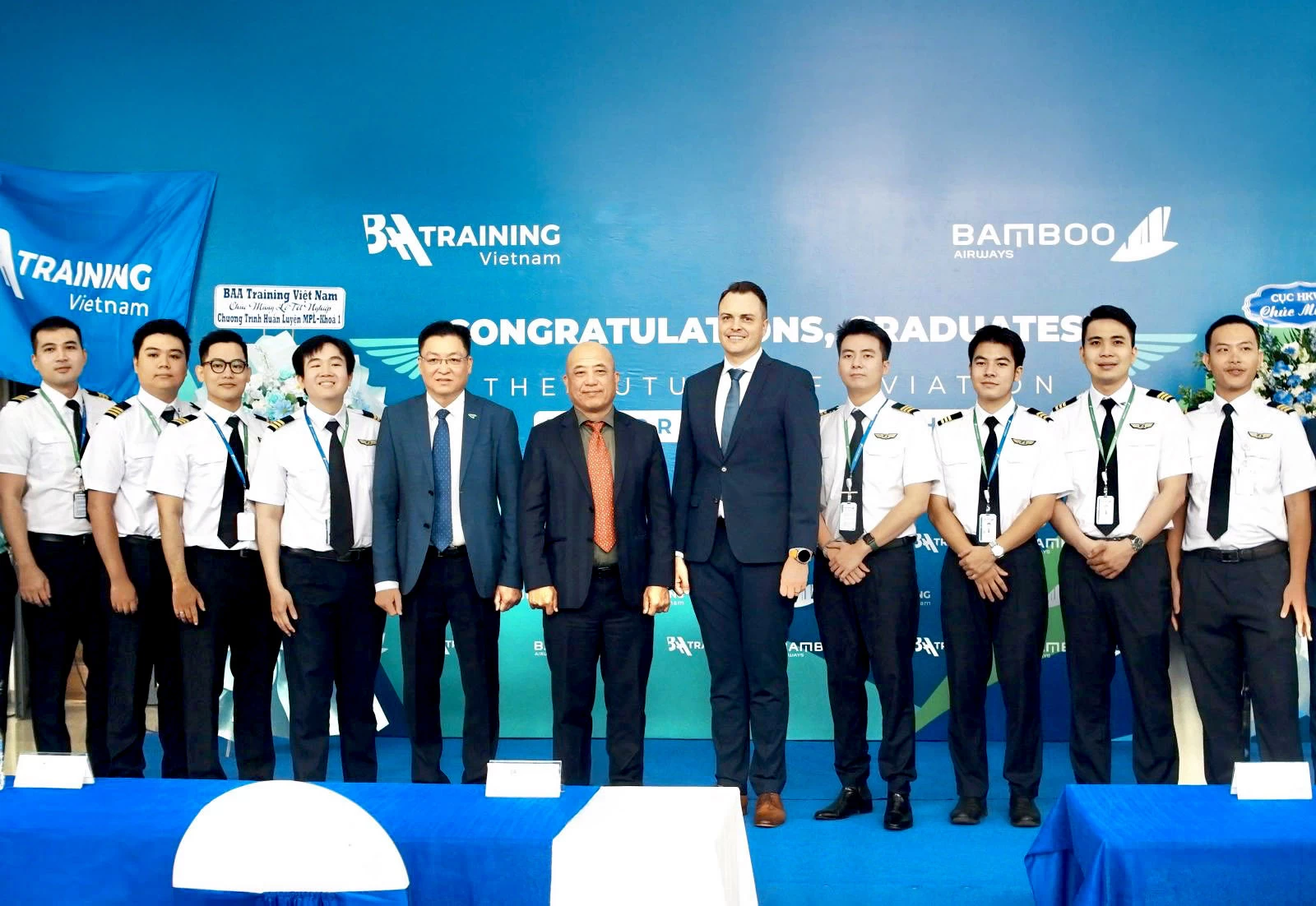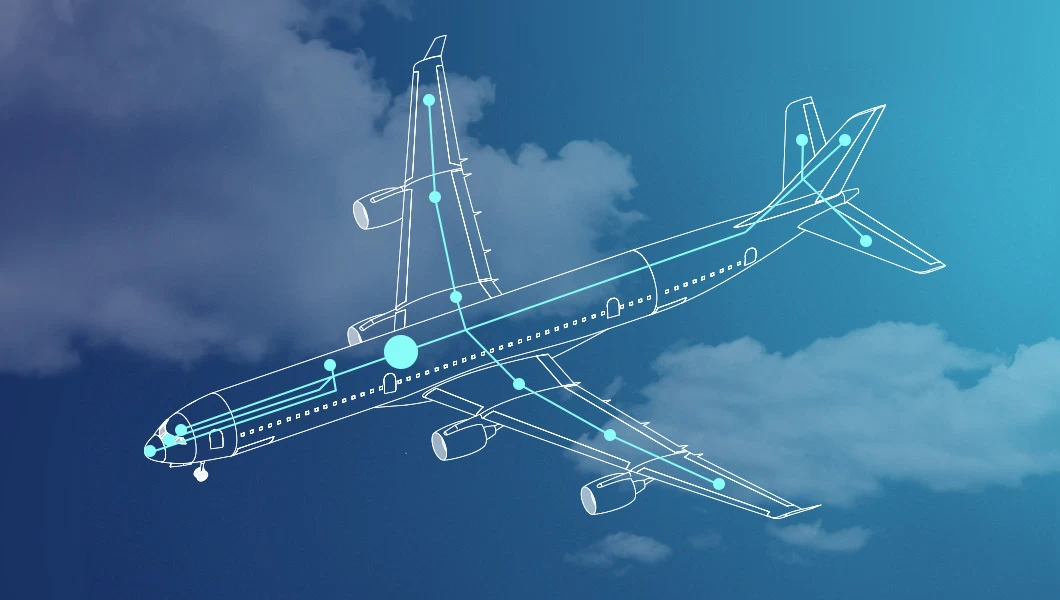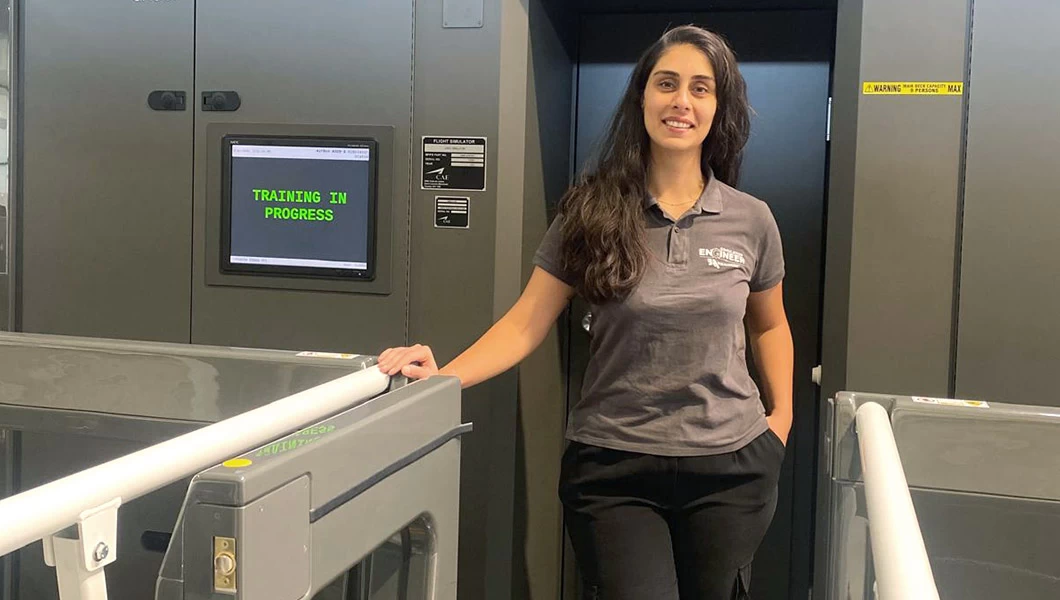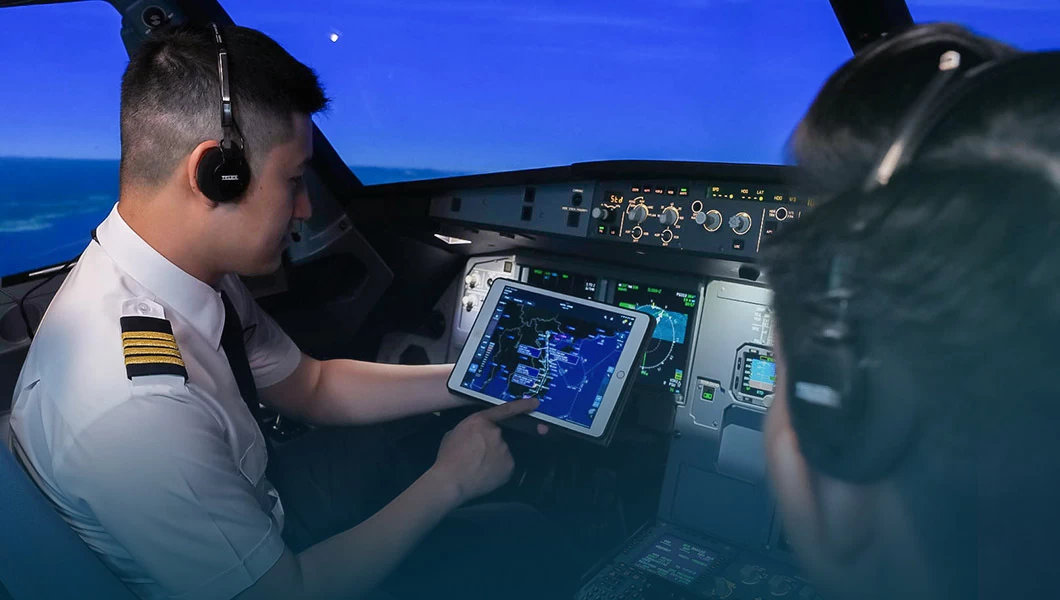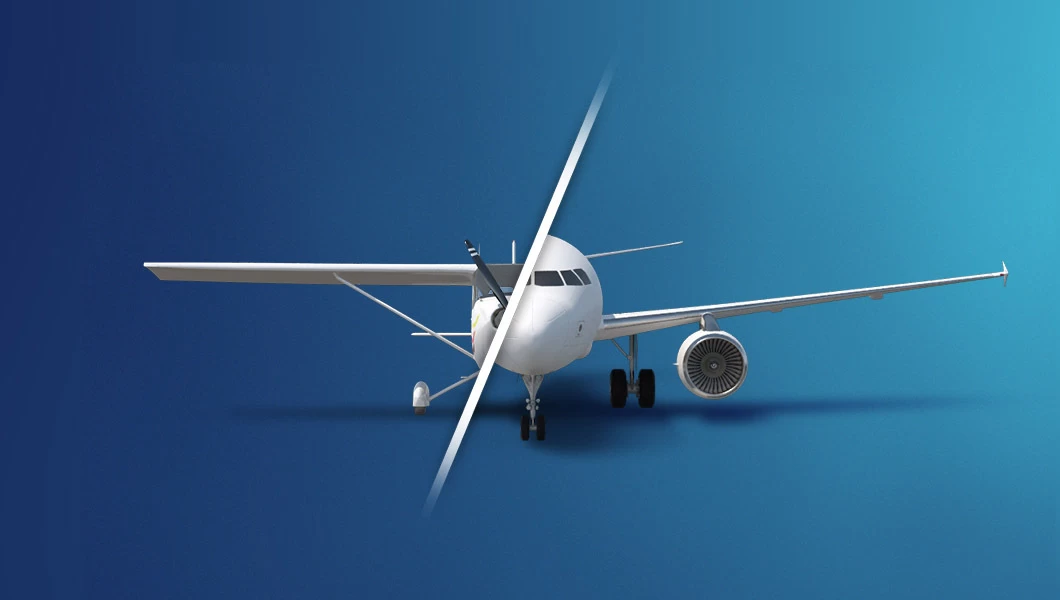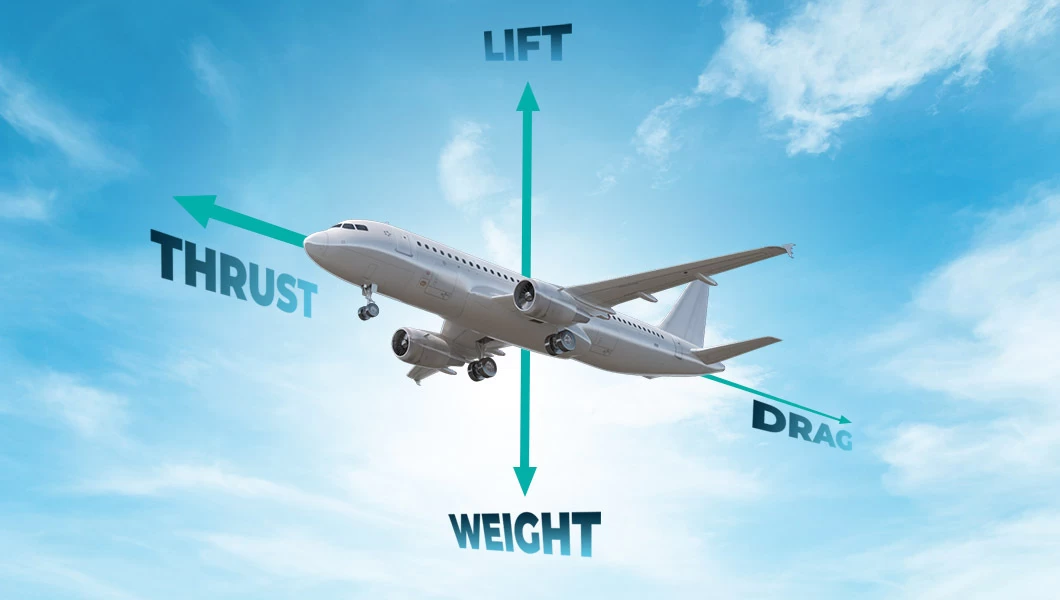Prefer to listen? Press play to hear this article.
Questions like these are perfectly natural, and wading through the regulatory quagmire that surrounds the world of flight device levels in an attempt to get to grips with it all can be a gruelling task. It’s high time that it was demystified and made simple.
FFS – Full Flight Simulators
Before we get into the finer points of exactly what differentiates FFSs from FTDs, there’s one key difference to point out: motion. Both the FAA and EASA classifications of FFS systems involve a hierarchy where, in simple terms, the more advanced the system, the more advanced its motion capabilities are. As FFSs are the most advanced aviation training devices, their ability to move through six different axes at the highest levels of classification makes them the pinnacle of flight simulator aviation training.
This lets full flight simulators replicate how a flight will feel for the pilot, responding in a tactile manner to every input. By mirroring what a real plane will do in any given scenario, pilots can prepare for unexpected events such as heavy turbulence. This means that short of jumping in the cockpit for real and taking to the skies, there is no greater way of testing a pilot’s skill and seeing how they perform.
Anyone who’s ever borrowed a friend’s car for a quick trip down the road will know that different vehicles often feel completely different to drive – now imagine the difference between a small turboprop and an A320. It’s for this reason that FFS systems are tailor-made to replicate specific aircraft models, as pilots must be keenly aware of exactly how each craft will respond to their controls.
In fact, these systems are such accurate mirrors of the aircraft they represent that this has an added benefit for pilots: they can earn type-rating qualifications for specific aircraft! All of this comes at quite a price, naturally, and the question of how much an EASA Level D simulator costs can result in 8-figure answers. That’s why pilots-in-training often spend more time in simulators with less of an impact on the wallet.
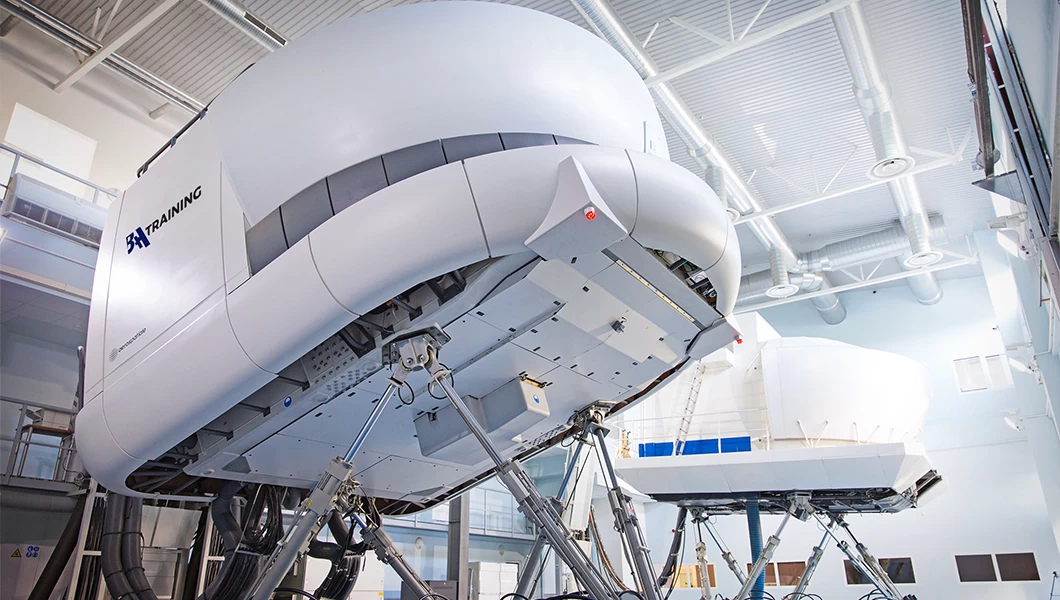
FTD – Flight Training Devices
Put simply, an FTD environment is a step below a full-on FFS. While FTDs often lack the full, multi-axis motion capability of their more comprehensive (and expensive) FFS cousins, that doesn’t make them useless for aspiring pilots – anything but.
At the most basic level, an FTD system is often a pilot’s first opportunity to set foot in a cockpit, allowing them to build familiarity and comfort in this challenging environment before they take on more specific tasks in an FFS.
The old adage that there’s no use trying to run before you can walk rings true here: for those in the early stages of their pilot training journey, it’s often better to build skills gradually in an FTD rather than jumping in at the deep end in an FFS.
In contrast to FFS setups, which only replicate large airplanes, there are different types of FTD environments. There can be a type-specific A320 Level 2 FTD or an FTD replicating a smaller single-engine like Cessna. Level 1 FTDs or FNPTs can even be generic, offering instruction applicable to any small or big aircraft that an operator might find themselves in.
The adaptability of FTDs translates directly into savings, as the regulations allow future pilots to shift some of their training to an FTD, reducing the time spent in costlier FFS environments. This leads to the key advantage of FTDs for students and flight training schools: cost. Because these machines lack some of the more high-end technical specifications that can be found in an FFS, they represent better value for more routine training.
Your PILOT CAREER
starts with a first click
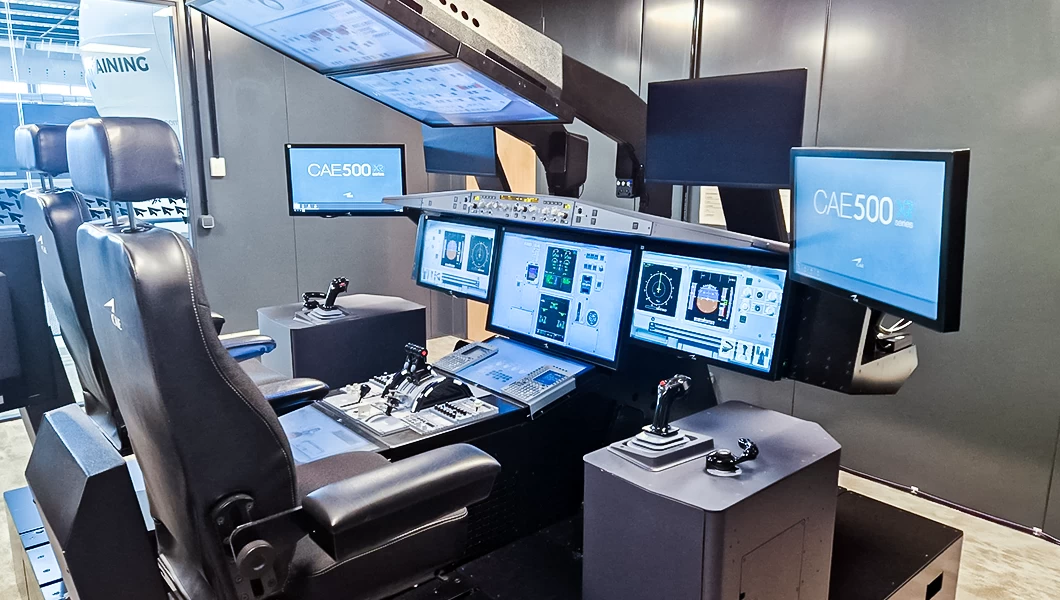
BITD – Basic Instrument Training Devices
These are the most basic aviation training devices, and are used for larger aircraft – think 737 territory (or smaller like Cessna). They essentially teach pilots to navigate through required checklists of operations in the correct sequence. These are different for every aircraft and cover a range of potential scenarios – from pre-flight checks to takeoff and landing, and even in-flight routines. Far less technologically demanding, they require practical knowledge and an understanding of the specific cockpit layout of the model being flown. This means that they test the pilot’s memory recall more than their minute-by-minute decision making.
Because these devices test a pilot’s knowledge of which cockpit controls they should operate and in which order, the pilot’s actual presence in an aircraft or FFS s not always necessary. There are even online BITDs available for aspiring pilots, testing their recollection of procedures as well as their ability to locate the correct instruments as they go.
This kind of flight simulator training device has obvious benefits, enabling remote learning and allowing pilots to hone their skills from anywhere in the world. At the same time, BITDs and OTDs still deliver key knowledge and help future flyers reinforce the correct sequences of actions in their mind, committing them to memory until they’re second nature.

What the Regulators Say
The FAA and EASA regulate the aerospace industries in the US and EU, respectively, and this extends to the design and use of flight simulation training devices. With the relevant documents running into the hundreds of pages, the table below distils the essence of how each type of flight training device is broken down into levels and then classified.
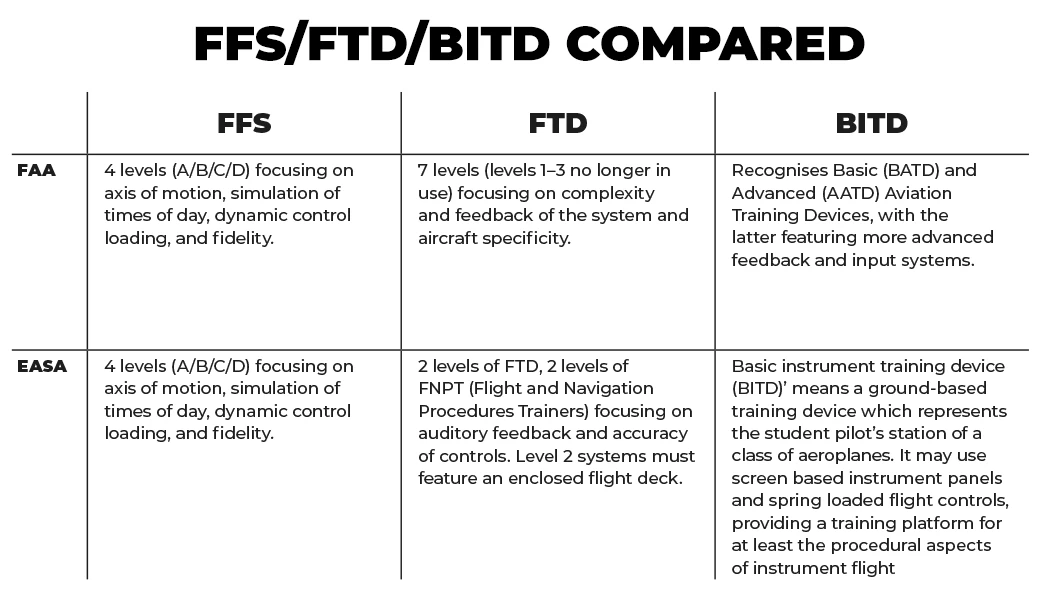
Looking Ahead
Whether taking your first steps on the path towards becoming a fully fledged commercial pilot or days away from collecting your licences, enhancing your understanding of the tools available to build your skills and grow your knowledge is never a bad idea. As even this brief overview demonstrates, there’s certainly no shortage of solutions when it comes to training the next generation of pilots – which one best suits your needs?

